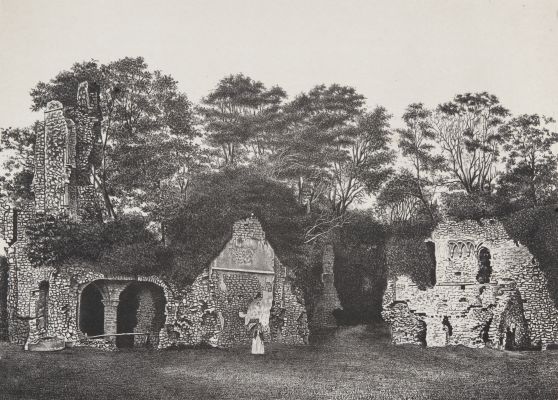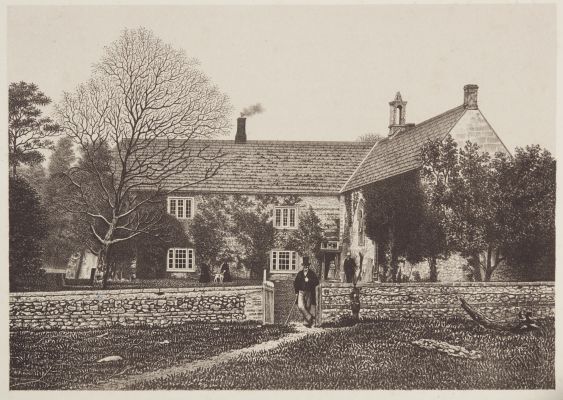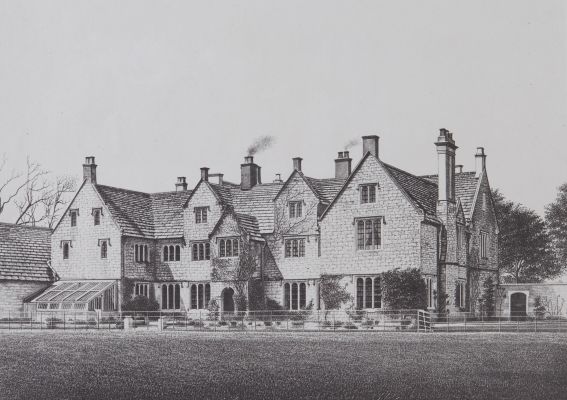
Title
Weymouth. Church of St. Joun’s, Radipole (detail)Artist
Pouncy, John (British, 1818-1894)Publication
Dorsetshire photographically illustratedDate
1857Process
PhotolithographAtelier
John Pouncy, Photographic InstitutionImage Size
(detail)
For the first book illustrated by photolithography published in Britain, John Pouncy created a variant on the process used by Barreswil, Davanne, Lerebours and Lemercier. Pouncy explains in his Introduction that as original photographs generally fade, "under these circumstances [he] was determined to call in the aid of another art, that of Lithography… this determination he has carried into effect, and the views which were originally announced as photographs will now appear as Photo-Lithographs." – Introduction, p. (iii).
Pouncy indicates in the text that he ‘engaged artists of high standing to assist him in the work’, a fact evident from the plates themselves, which are heavily retouched. Having thus lost their purely photographic appearance, these plates in comparison to the early plates in Photographic art Treasures (London, 1856-7) are but remotely photographic. What Pouncy had achieved was to make photographs permanent. As such was an important transitional technique, never repeated, leading to the transferring of untouched photographs to stone. Pouncy won a silver medal in the Duc De Luynes competition.
References
Eder, Josef Maria and Edward Epstean. History of Photography. New York: Columbia University Press, 1945. p. 556
Gernsheim, Helmut. The History of Photography. London: Thames and Hudson, 1988.
Goldschmidt, Lucien and Weston J. Naef. The Truthful Lens: A survey of the Photographically Illustrated Book, 1844-1914. New York: Grolier Club, 1980. Print.











